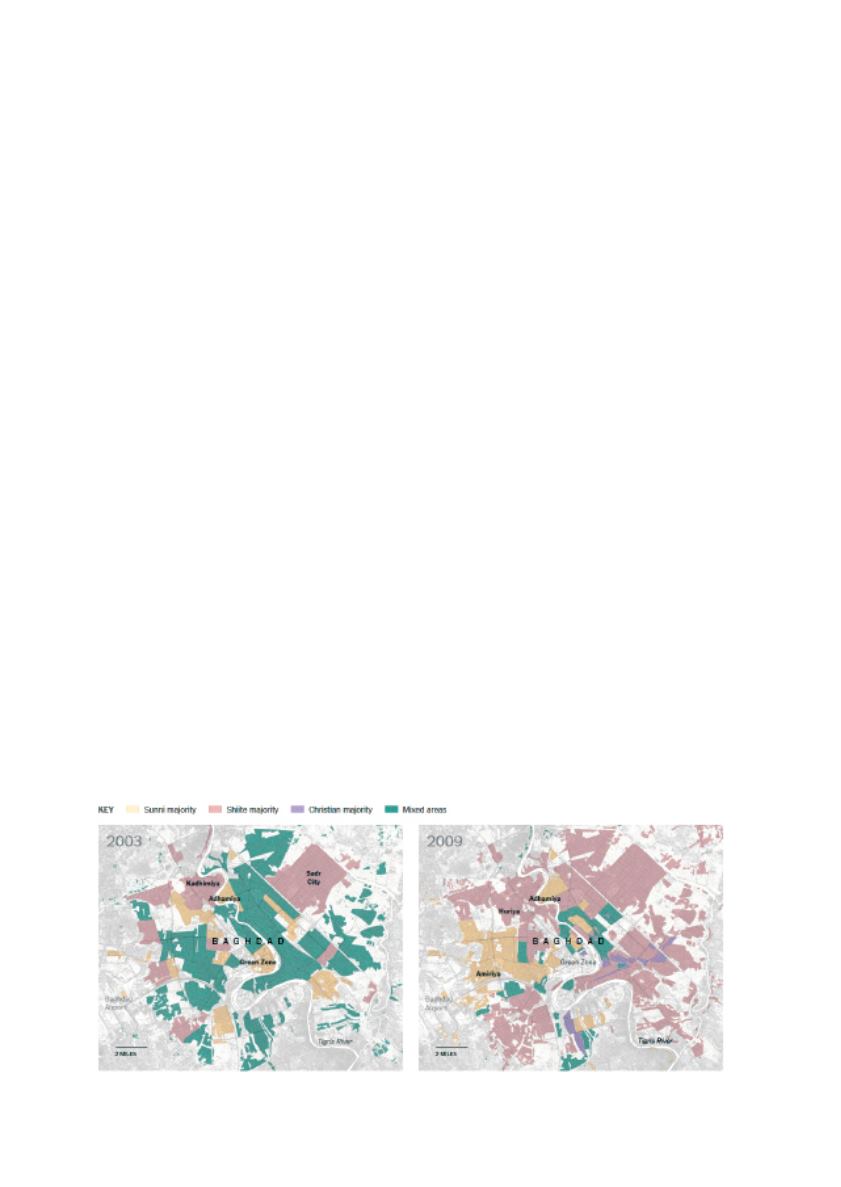

84
Pedro Rojo Pérez
religious indoctrination, where children are packed into overcrowded classrooms lacking
resources. There is also a high rate of children dropping out: the net attendance ratio
in secondary school participation (2008-2013) is 53% of boys and 45% of girls. The
problem is not financing (57% of investment in education in 2011 was not made), but
rather the political volition of governments obsessed by the role of religion in society
and barely interested in well-trained citizens that oppose the discourse of clergyman
and ayatollahs. The biggest victims of this situation are once again Iraqi girls, who have
more difficulties attending school and university due domestic obligations, their families’
financial problems in bearing the costs, early marriages, the conservative view of their
role in society or a lack of security in the country, which means that parents don’t allow
their children to go to school alone.
The double wave of displaced Iraqi people
In contrast to the other aspects studied in this article, the issue of forced displacement
was a completely new humanitarian issue for Iraqi society in 2003. The security chaos that
ensued after the fall of Baghdad on 9 April 2003 gave rise to the proliferation of armed
groups of every kind. In addition to the aforementioned militias linked to political parties
involved in the occupation, armed groups of resistance against the occupation emerged.
In the middle of this chaos, another phenomenon appeared that was unknown to the
moderate Iraqi society: extremist groups with ties to Al Qaeda. In the early years of armed
conflict the focus was essentially between resistance and occupying forces (both soldiers
and the private security companies providing them with coverage), while the militias and
Al Qaeda were implementing their respective sectarian agendas. The attack against the
Mosque of Samarra (22 February 2006) was the catalyst that saw this low-intensity sectarian
war hurled into the foreground. Threats and murders based on religious origins created the
biggest displacement crisis since the Second World War, with five million Iraqis fleeing
their homes. The “Shi’ization” policy of Baghdad, always denied by the Iraqi government,
leaves few doubts when observing the demographic changes in the Iraqi capital, as shown
in the following map:



















